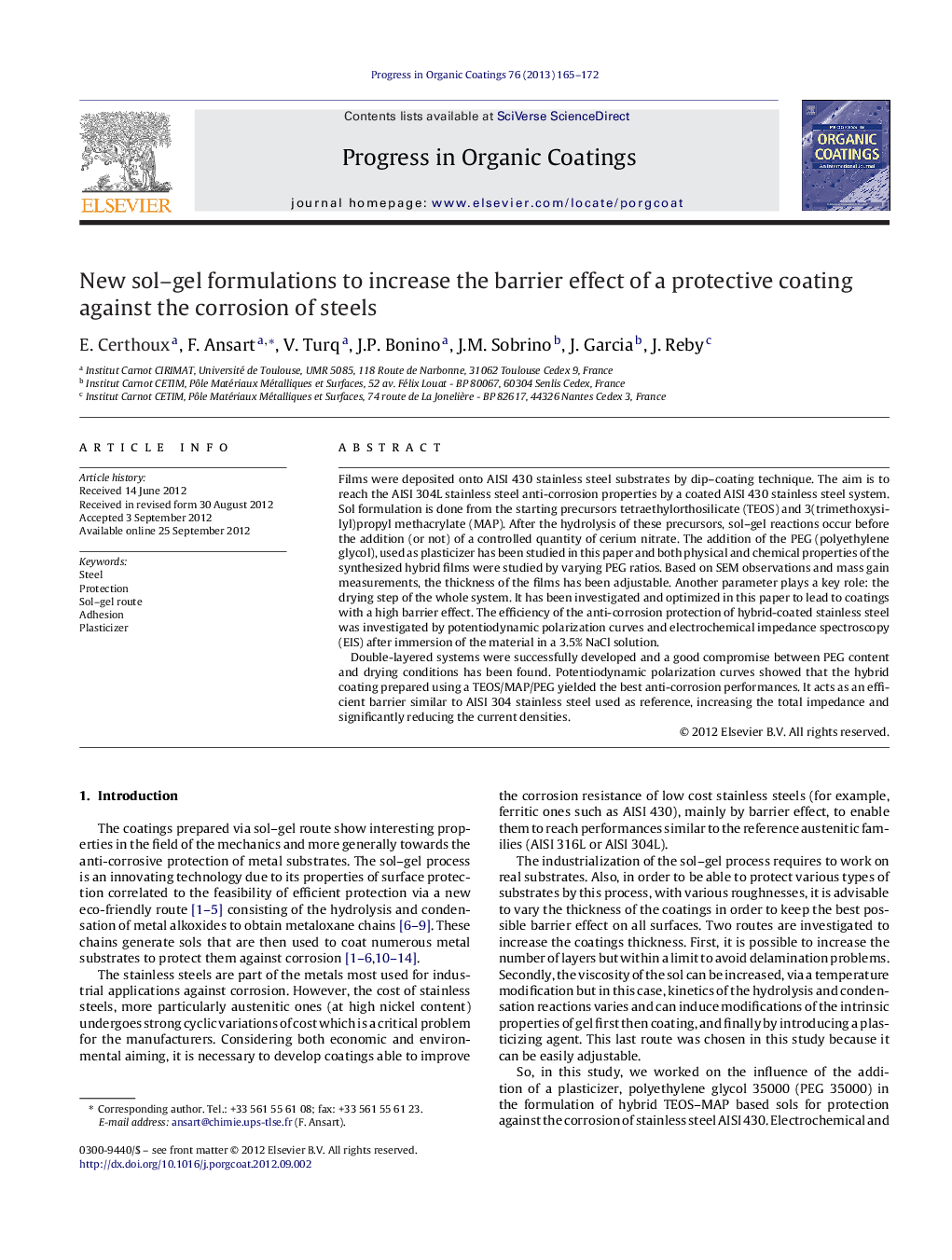| Article ID | Journal | Published Year | Pages | File Type |
|---|---|---|---|---|
| 692797 | Progress in Organic Coatings | 2013 | 8 Pages |
Films were deposited onto AISI 430 stainless steel substrates by dip–coating technique. The aim is to reach the AISI 304L stainless steel anti-corrosion properties by a coated AISI 430 stainless steel system. Sol formulation is done from the starting precursors tetraethylorthosilicate (TEOS) and 3(trimethoxysilyl)propyl methacrylate (MAP). After the hydrolysis of these precursors, sol–gel reactions occur before the addition (or not) of a controlled quantity of cerium nitrate. The addition of the PEG (polyethylene glycol), used as plasticizer has been studied in this paper and both physical and chemical properties of the synthesized hybrid films were studied by varying PEG ratios. Based on SEM observations and mass gain measurements, the thickness of the films has been adjustable. Another parameter plays a key role: the drying step of the whole system. It has been investigated and optimized in this paper to lead to coatings with a high barrier effect. The efficiency of the anti-corrosion protection of hybrid-coated stainless steel was investigated by potentiodynamic polarization curves and electrochemical impedance spectroscopy (EIS) after immersion of the material in a 3.5% NaCl solution.Double-layered systems were successfully developed and a good compromise between PEG content and drying conditions has been found. Potentiodynamic polarization curves showed that the hybrid coating prepared using a TEOS/MAP/PEG yielded the best anti-corrosion performances. It acts as an efficient barrier similar to AISI 304 stainless steel used as reference, increasing the total impedance and significantly reducing the current densities.
► We develop a new formulation of hybrid coatings to protect steel against corrosion. ► Incorporation of a stable plasticizer is necessary to increase barrier effect. ► We report bi-layered systems with both anti-corrosion and hydrophobicity properties. ► Drying temperature is a key parameter to optimize properties of bi-layered systems. ► Electrochemical and mechanical properties of the coatings are in good agreement.
